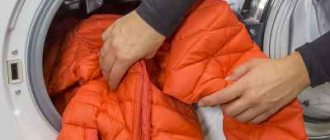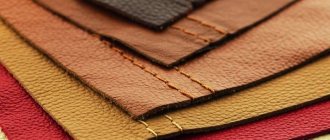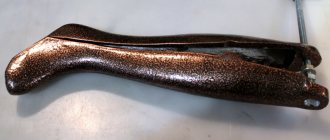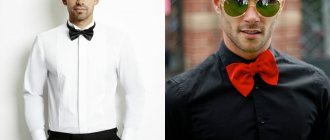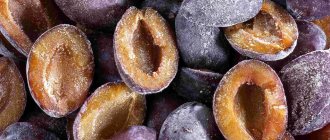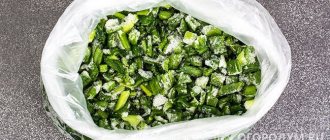Introduction
The whole world and our lives in it change daily - climate, place and living conditions, social status, social circle, work and leisure, income, plans, mood, fashion and much, much more... What remains unchanged is man’s eternal desire for warmth and comfort when in any weather and under different circumstances.
Therefore, when updating their wardrobe with the approach of cold weather, many people prefer down clothes (in common parlance - down jackets) - coats and jackets, vests and overalls - warm, soft and voluminous, creating the effect of security and comfort. Today, there are many different tips and recommendations on how to choose a down jacket, checking a lot of designations and taking into account a large number of details. Most of them are based on the argument that the most important thing in a “correct” down jacket is the down. In fact, EVERYTHING is important in a down jacket. Unless, of course, it is a high-quality functional down jacket made by real professionals.
The concept of high-quality and functional down clothing and its manufacturers
Currently, there are more than 20 American, Canadian, Swedish, Norwegian, Finnish, German, French and Italian companies recognized throughout the world as leading manufacturers of down clothing. The basis of the authority and prestige of these companies is many years of experience and an integrated approach to creating clothing for difficult weather and climatic conditions, winter sports and extreme types of human activity. Most of the leading manufacturers of down clothing, independently or jointly with other specialized companies, conduct research and development in the field of innovative high-tech materials and technologies, own numerous patents, have advanced developed quality control systems at all stages of product production and conceptual approaches to environmental protection. Their products are thoroughly tested before release, all the pros and cons are analyzed.
Thus, a well-made down jacket has the following characteristics:
- Ergonomic cut that does not restrict movement . The comfortable design of the jacket will allow you to easily raise your hand to the handrail in transport, adjust the thermal protection by adding or removing the necessary layer under your outerwear, without turning into a shock or, conversely, into a tightly stretched barrel :)
- Light jacket weight. If the manufacturer uses high-quality filler correctly, the jacket will weigh very little. Even if you are not that active on foot, you will definitely appreciate this characteristic, which other types of winter clothing do not have in principle.
- Excellent thermal insulation properties. A lightweight down jacket, depending on the density of the filler, can protect a person down to Antarctic extremely low temperatures.
- Wind and moisture resistant material. As a rule, a high-quality product has the necessary wind/moisture protection. Manufacturers are constantly improving production technologies for their materials for jackets. A technological combination of completely synthetic or a mixture of synthetic and natural fibers is used. The high-quality material for the jacket is tear-resistant and provides excellent protection from wind and wet snow. In some cases, the material may have breathable properties.
- Ergonomics and details. In the cold winter, it is not always convenient to dig through your pockets for a long time wearing gloves in search of keys or a mobile phone. A good jacket has a well-thought-out arrangement of pockets with clasps, a windproof zipper placket, a hood that is really comfortable to use, with the ability to adjust the head, drawstrings for the sleeves or internal knitted cuffs, as well as drawstrings in the right places to adjust the jacket to fit and creating additional thermal insulation.
Therefore, when choosing your jacket, you should focus on whether a product from a particular manufacturer meets the criteria you need. By analyzing some of the technologies used by winter jacket manufacturers and understanding how they will work in the products themselves, you can more confidently make the right choice when purchasing winter clothing, which is usually purchased for more than one season.
History of down jackets
In general, this or that clothing filled with down for thermal insulation has been used for quite a long time. These are the winter suits of some peoples of Siberia, and some clothes with down filling among the Scandinavians. However, in its modern form, the down jacket appeared in the USA. Its creator was Eddie Bauer, who later founded the company of the same name, which has successfully produced warm and comfortable clothing to this day. According to Eddie himself, the idea of such clothing was suggested to him by his uncle, who was born in Siberia. In 1936, Eddie Bauer designed and created a jacket that was quite technologically advanced and new at that time. Based on its silhouette, it could be described as a “bomber,” i.e. e. it was a short jacket with knitted cuffs and a short collar. Down was used as filler. The item was quilted diagonally so that the filling would not bunch up. The very first versions of this model had a cotton top. For its time, this was a revolutionary product; the jacket was very light, warm and comfortable. Here are archival photos of the very first Eddie Bauer down jacket models.
Over the years, down-filled jackets have become popular and loved by a wide variety of consumers. Among them were hunters and tourists who had to stay outside for a long time in winter, as well as ordinary people who wanted convenience, lightness and comfort from winter clothing, because... at that time, things for the winter were quite heavy. Over time, production technologies developed, new models appeared, a variety of companies began to produce similar clothes, and the down jacket became firmly established in the everyday wardrobe of a modern person. By the way, a jacket similar to the one with which this story once began can be bought today. This model is called Eddie Bauer -Skyliner .
Understanding the Question
You should initially keep in mind that high-quality warm clothing is developed for specific conditions of use, i.e. assumes social, weather, natural conditions of its use, the degree of protection from cold, wind, water, methods of taking into account the natural characteristics of the human body, etc. Therefore, a real high-quality down jacket is a complex of specific materials, technologies, designs and design solutions that provide the necessary properties of the product. If we represent this as a formula, we get:
Purpose => materials + technology + construction + design => consumer properties
Therefore, when planning to purchase a down jacket, you must have an accurate idea in what conditions you are going to wear it.
Let's consider the constituent elements - the “building blocks” of our formula:
Winter down jacket as a wardrobe element
Down jackets came into fashion in Russia in the 80s and 90s, “replacing” mouton and astrakhan fur coats. If at first bright, warm jackets were in short supply and were only available to notorious fashionistas, then in the mid-90s, Chinese down jackets filled the streets. Wearing a down jacket was “cheap and cheerful,” so it became commonplace. The colors are eye-catching, the styles are such that they will ruin any figure... Our happiness is that today the down jacket has returned to the wardrobe in a completely different quality!
A down jacket is a light and stylish winter jacket or coat that is perfect for urban fashionistas and fashionistas. A well-cut down jacket can be combined with accessories and create an incredibly stylish look. It fits perfectly:
- young mothers who walk with their children;
- car ladies and men who spend a lot of time in the car;
- as clothing for trips out of town and into nature.
In terms of comfort, a down jacket cannot even be closely compared with fur coats and sheepskin coats: it is light, it is convenient to move in it, it can be easily cleaned and even machine washed! A down jacket is a necessary element of the wardrobe of a modern active person.
Natural filling materials for down jackets
Let's try to understand the traditional question - what is it made of and how does it work?
The very idea of a down jacket is a jacket with good thermal insulation, which, thanks to its design, materials and filling, is relatively lightweight and does not restrict movement. It all works quite clearly too. The filler, due to its properties, creates an air layer that helps preserve the wearer’s heat.
The best material for filling is the down of waterfowl. In other matters, fluff can be very different in its qualities and properties. When making a down jacket, the filling is placed in special quilted bags, which can be visible from the front side of the down jacket or not visible at all, depending on the design.
Waterfowl down (eider, goose, duck) – due to its lightness, elasticity, breathability and high heat-shielding properties, it is considered the best of all known insulation materials for clothing.
Eiderdown is a unique down of wild ducks that nest mainly on Arctic coasts.
A wild product that cannot be obtained under artificial conditions. It is separated naturally from adult females during the period of molting and egg laying.
The collection and most of the processing of this fluff is done manually, using unique “dry” cleaning technologies.
The fluffs have a specific structure and firmly adhere to each other. Therefore, during operation of the product, the eider down insulation does not form lumps, does not spread, maintaining a constant shape and thickness. Very light and elastic, has the lowest thermal conductivity, high hygroscopicity, breathability and durability. Mined in small quantities, it is used to make very expensive, high-quality blankets and exclusive clothing.
Goose down is the down from the breasts of very young geese.
It is obtained on an industrial scale mainly from birds raised in captivity under special conditions. It lends itself perfectly to mechanized processing, slightly inferior in properties to eider down. The most common natural insulation material used in a variety of clothing and household items.
Duck down is the down from the breasts of very young ducks. It is collected, processed and used in the same way as goose down, but has a finer and more delicate structure.
Control of fluff production
A significant part of goose and duck down used in warm clothing is a by-product of the food industry. At the same time, down with the highest consumer properties should be collected manually during the natural molting period of birds. In order to make a profit, some geese and duck breeders use cruel methods to collect down from live birds several times during the raising process. To eliminate such phenomena and for the purpose of comprehensive control of the quality of raw materials, the practice of constant monitoring of the conditions of development and maintenance of birds, and methods of collecting down, has become widespread among leading manufacturers of down products. Patagonia specialists were the first to introduce a system of humane treatment of down production in 2007.
Control of processing, properties and quality of fluff
Down and feather production technologies, properties and quality of raw materials and finished products, requirements for hygiene, cleanliness and safety for humans are regulated by relevant state and international standards. Down and feather raw materials and products undergo testing and quality certification in accordance with these standards in the regional divisions of the International Down and Feather Testing Laboratory (IDFL - The International Down and Feather Testing Laboratory).
In Europe, the standards of the European Down and Feather Association (EDFA-European Down and Feather Association) apply, and testing and certification are carried out by specialized laboratories.
The norms of the EN 12934 standard establish the rules for designating the composition of insulation after final processing. Class I includes only new insulation made from down and waterfowl feathers of first use. The percentage of down and feathers in the insulation should be indicated on the product label using a fraction - for example, “85/15”. It is believed that high-quality insulation should contain at least 80% fluff. The use of the term “pure” for the type of down - for example, “pure goose down” (pure goose down) - is permitted if the admixture of other types of down in the insulation does not exceed 10%.
The standards of the EN 12935 standard establish requirements for the cleanliness and hygienic quality of insulation. Products with insulation that has undergone the necessary processing, testing and meets the requirements of the standard are marked with the Daunasan® and Downafresh® logos.
Experts say that the service life of products with such insulation, if the recommendations for use and care are fully followed, can be up to 20 years.
The PAS 1008 standard establishes safety criteria for people with dust allergies. Products with insulation that has undergone the necessary processing, testing and meets the requirements of the standard are marked with the NOMITE® logos.
The main parameter characterizing the thermal insulation properties of natural insulation is the Fill Power indicator, expressed in cubic inches per ounce (in?/oz). The Fill Power for each batch of down is determined by the results of a special test: a 28.4 gram (1 ounce) portion of down is kept for 3-5 days in a graduated cylinder with a diameter of 241 mm with a control scale under a load of 68.3 grams at certain temperatures and humidity levels. The volume occupied by a portion of fluff in the cylinder at the end of the test is the Fill Power value of the fluff of this batch. Fill Power test scores show the quality of down: up to 400 – low, 400/500 – average, 500/750 – excellent, over 750 – exclusive. Currently, innovative high-tech technologies make it possible to obtain unique fluff with a Fill Power rating of 900.
The physical meaning of this parameter is the volume occupied by a unit mass of fluff of a certain quality and density. The practical significance of this parameter is the ability to obtain various combinations of thermal insulation qualities, volume, weight and price of the product, depending on the purpose and required consumer properties.
This video shows how the Fill Power test is performed
However, in any case, one should keep in mind the fact that people's sensitivity to air temperatures can be completely different. And it is impossible to say with 100% certainty that in this jacket with exactly such technologies and filler density, a particular person will be absolutely comfortable in certain weather.
Yes, almost all serious manufacturers of warm winter clothing provide thermal insulation ratings for their products. They combine their products into collections according to their properties or classify products in some other way for ease of selection. However, all these classifications are advisory in nature, so it is worth studying the issue more carefully.
In addition, the Fill Power parameter refers specifically to the quality of the filler itself, regardless of the temperature rating of the down jacket itself, so it is not worth making the thermal insulation of a product directly dependent on the FP parameter (which is what some stores do). For example, a clearly lighter jacket designed for slight frost can have exactly the same Fill Power rating as a down jacket for extreme temperatures. There is absolutely no mistake here.
To determine the optimal temperature regime for a jacket, there is a parameter - the degree of insulation (Fill Down). However, this indicator is not always indicated. Therefore, a thorough study of the product of interest would be an advisable solution.
"Down" dictionary (glossary)
When searching for down jackets in online stores in the USA and Europe, you will find our small dictionary-glossary of English words and terms most often used in product descriptions useful. We also recommend using online web page translators, such as Google Translate.
Down Jacket (for man or woman, kids or youth) – down jacket (for a man or woman, child or teenager)
- parka - down parka, jacket with a hood
- puffer - down bomber jacket (dutik), the most common style of down jacket
- coat (medium or long) - down coat (female), comes in medium and long styles
- vest – sleeveless down vest
Insulation (goose down, duck down, 550-850 Fill, 80/20, 90/10, 60/40) – insulation (goose, duck down, down elasticity value, down-to-feather ratio in %).
Body liner (Lining) - lining material.
Shell – fabric, the top covering of a down jacket, made from both natural and synthetic fabrics or a mixture of both.
- membrane - multi-layer membrane fabric, has a high density and weight, can have different brand names - Gore-Tex, HyVent, etc.
- DWR treated/covering - coating of the upper fabric with a waterproof compound.
- ripstop - fabrics with a special reinforcing weave structure.
Windproof (block wind) - windproof.
Waterproof - waterproof.
Hood - hood.
Cuffs (soft, rib-knit inner) – cuffs (inside with a soft, knitted insert).
Detachable (hood, ruff, skirt, fur) – removable part (hood, collar, skirt, fur).
Adjustable (hood, gaiter/throat, cuffs, cord waist&hem) – adjustable/contractible parts (hood, neck, cuffs, drawstring for tightening the waist and bottom hem).
Fur (natural/genuine or faux) – fur (natural or artificial) as a finishing element.
Zipper (external, internal, two-way) – zipper lock (outside, inside, both ways), prefer YKK locks.
VELCRO closure – Velcro
Pockets (external, internal, security, hand warmer, dual entry, zip-off) – pockets (external, internal, secret, for warming hands, with double access, with a zipper)
Fit (regular, slim, relaxed) – fit, cut (regular, tight, loose fit - usually runs too big).
Bulky – voluminous, baggy.
Overal length – the total length of the down jacket.
Weight (light, medium, heavy) - weight (light, medium, heavy).
Wash (machine or hand) – washing (machine or hand).
Technologies in the production of down jackets
Technology primarily concerns fabrics. The fabric for a good down jacket is primarily required to be waterproof. The fact is that down filling, even with minimal water ingress, begins to instantly lose its properties and, moreover, begins to deteriorate very quickly. For this reason, special attention is paid to the tightness and gluing of seams.
The North Face has its own proprietary FuseForm technology - these are seamless models, models with anatomically calculated shapes, providing an elegant silhouette with maximum freedom of movement + reduced product weight and easy packability due to the absence of seams or special methods for their formation. True, at the moment this applies more to light jackets than to winter clothes. However, the technology is quite interesting.
The most commonly used in the production of winter jackets with filling are modern fabrics with a membrane. Such fabrics are resistant to moisture and wind, at the same time they allow the evaporation of the human body to pass through them, preventing sweating. The most well-known membrane at the moment is Gore-tex. Manufacturers may call their membranes differently, but their operating principles are similar.
For example, the Swedish company Fjallraven calls its membranes hydratic.
And the American company The North Face has several types of membranes, united under the name HyVent
Good manufacturers pay no less attention to fabric processing. Thus, the Canadian company Canada Goose has its patented DWR (Durable Water Repellent) coating, which effectively prevents the penetration of moisture.
Attention is also paid to the fabric’s resistance to tearing and mechanical damage. For this, various types of reinforced threads and rip-stop fabrics are used. If you pay attention to the rip-stop fabric, it has a characteristic texture of reinforced “cells”. In case of damage, the gap will not extend beyond one cell.
Useful tips for caring for down jackets
High-quality down jackets can last for dozens of seasons if they are properly cared for. No extraordinary care conditions are required, just try not to let the down in the down jacket get wet, and if this happens, dry it as quickly as possible. The down jacket should be stored flat on hangers. Read the care labels carefully!
Pay special attention to the washing process. We'll give you some practical tips for washing in the washing machine.
- For washing, set the softest and most delicate program.
- Be sure to fasten all zippers and buttons
- Use special liquid detergents for down jackets
- A washing temperature of 30 degrees Celsius is quite sufficient
- Turn on the extra rinse mode for better rinsing of the powder.
- Minimum spin speed: when wet, some down jackets become very heavy and the machine simply cannot cope with the spin cycle. In this case, you must press it manually.
- Place 3-4 tennis balls in the washing machine drum.
- The down jacket is dried flat in warm and sunny weather on the balcony or bathroom
- During the drying process, periodically fluff the down jacket, straightening the down.
- After complete drying, you can put the down jacket again in the washing machine along with 3-4 tennis balls and turn on the spin mode (without washing and without rinsing). A centrifuge with balls should beat the filler a little more and make the clothes more voluminous.
Discuss on the forum
Artificial fillers
Along with down, artificial fillers are also worth briefly mentioning. Although formally jackets with such fillings cannot be classified as down jackets, nevertheless, among them there are many comfortable and technologically advanced models. In addition, some fillers can not only be as good as down in a number of indicators, but even surpass it.
Primaloft. This is a very thin fiber insulation. Its advantage is the fact that it is not as afraid of moisture as down. At the same time, Primaloft is only slightly inferior in weight to down. Such insulation continues to retain heat even if moisture does penetrate into the bag with the filler.
There are several types of Primaloft, including Primaloft Eco, which has exactly the same qualities but is made from up to 50% recycled materials.
Termoball. This is a joint development of The North Face and Primaloft. In fact, such a filler is no different in properties from natural fluff. Unlike the vast majority of artificial insulation, Termoball can be compressed into lumps like fluff and have the same elastic qualities as in the Fill Power test of natural filler. At the same time, Termoball retains all the advantages inherent in synthetic insulation. It withstands moisture well, does not deteriorate or rot.
The company claims that the future lies with such synthetic insulation, since such a filler does not require such careful gluing and processing of seams as is required for down. However, at the moment, due to the relatively high price, Termoball has not yet found such widespread use.
Brands
Many modern fashion houses and companies make clothes for winter, but do not always live up to expectations. Often, a branded down jacket has a fairly high price, which is justified only by a high-profile brand. Which company is better?
When you hear the words “winter” and “warm”, the first thing that comes to mind is clothes from Columbia, but, unfortunately, they are quite expensive. As an option, an excellent and more affordable alternative is a jacket from the Canadian manufacturer Woolrich, in particular, the parka jacket model. Although the Alaskan parka is currently considered the most expensive jacket, we recommend buying it, because the country of origin, Canada, really knows a lot about extreme weather conditions and warm clothing.
For men, modern elegant down jackets from Tom Tailor, Norman and sports Nike are especially noteworthy; jackets from this brand are perfect for using a snowboard or skis even during severe frosts. Only the women's model WHITE RIVER LADY JK W ALPINUS can compare with it in terms of warmth and cost, but it is more suitable for spring.
Photo - Stylish wardrobe for the winter
A fairly affordable jacket, Sunny Right, is in no way inferior in quality to its branded counterparts. The same excellent combination of price and quality is represented by Decently models from Modex; they can now be seen in many fashion boutiques: Bazaar, Order or Oji (look for the catalog on the official website).
Good demi-season models can be purchased from Down Jaket. They make windbreakers, parkas, children's, men's and women's membrane jackets.
Girls can easily find all of the above companies on the streets of big cities: Kyiv, Moscow, Tomsk, Chernigov, Zaporozhye, Voronezh, Omsk, the capital of Kazakhstan.
Winter jacket styles
We all have different rhythms of life, different conditions, different physical activity and, accordingly, different requirements for winter jackets.
All winter jackets with down or synthetic insulation can be divided into several types, which are found in the product descriptions.
parka
Long jacket with a hood. It usually has a length to mid-thigh or lower. Equipped with special drawstrings to adjust a voluminous item to your figure, as well as to create additional thermal insulation. The parka often has a fur trim on the hood, which creates additional protection from the wind when the hood is on, or the hood acts as a fur collar when it is folded back.
Fjallraven Barrents Parka
Down coat
This is an elongated version of the women's parka with length to the knee and below. In principle, most of what was said above about parkas is also typical for a down coat. But as a rule, this type of clothing has a fitted silhouette and this item looks more elegant.
Marmot Chelsea Down Coat
Jacket
This is a thigh length winter jacket. This can be a jacket with or without a hood (alternatively, the hood can be removable).
Marmot Mountain Down Jacket
Down bomber
Sometimes this is called a very short, waist-length down jacket with knitted cuffs and a belt. This option often comes without a hood, although there are options with a hood. Perhaps this type of jacket does not protect against the cold as well as a parka, but in certain conditions it may be preferable (for example, if a person spends a lot of time driving).
Bomber jacket from Canada Goose. This model uses a removable hood with fur trim.
Down Vest
This is, of course, not a jacket, but nevertheless, a vest with down or synthetic filling is a popular type of clothing. It can be worn as an intermediate layer under a light jacket or as independent clothing in the off-season. A down vest is also a good choice for people who spend a lot of time driving.
The North Face Nuptse Vest
To summarize the description of the styles, it should be borne in mind that any item in the above styles can be
- Slim. Close fit. Typical for designer fashion items that emphasize the figure or women's clothing.
- Regular. Medium classic fit
- Relaxed. Relaxed spacious seating. Characteristic for sports and travel items that do not restrict movement at all.
Styles and cut of down jacket
Down jacket-robe
Left: Mango. Right: Farfetch.
A feminine, minimalist model that you definitely won’t get tired of next winter. The down jacket-robe can be short or long, but its main differences are the turn-down collar and belt. They place smart accents on the waist and create a more complex look without overloading it.
Maxi down jacket
Left: Zarina. Right: Farfetch.
Who hasn't dreamed of a maxi down jacket on the coldest days of winter?! This style is trendy now, and this is another reason to pay attention to it. It is best if the down jacket is straight cut - it will visually make you taller.
Down jacket-cocoon
Left and right: Zara
The model is good for those who love oversize. The main advantage of a cocoon down jacket is its loose fit, which, however, does not create a shapeless image. When choosing, don’t forget to check how comfortable it is to walk in, walk around as if you’re late for work. A too narrow cut will not work to your advantage.
Down jacket with hood
Left: Zarina. Right: Farfetch.
The most popular model. The hood can be with natural/faux fur or without it at all, depending on your preferences. In order not to make a mistake with your choice, pay attention to the style of the down jacket for the winter; it should not be fitted.
Design
Looking at models and collections of jackets, coats, parkas, vests, overalls and other things from recognized manufacturers, you can always find both products of a classic and traditional design (so to speak - “down jacket style”), as well as very elegant, bright and spectacular things. Perhaps products made in a traditional style are not so fashionable (primarily this can be attributed to women’s models), but the purpose of their manufacture is to protect from cold, snow and wind, to preserve your health and good mood for a long time.
Cabelas Trans Alaska Parka. A utilitarian down jacket for maximum heat retention in low temperatures. The loose cut (relaxed fit) does not restrict movement and provides additional thermal insulation.
Moncler Edward Jacket. Urban fashion down jacket. Slim fit, cropped silhouette, high sleeve opening. The emphasis is on external elegance and fashionable cut. However, it cannot be said that this down jacket is of poor quality. It’s just that the emphasis in this product is on cut and fit, and not on the purely utilitarian properties of the jacket.
Leading companies develop their models with the expectation that their practicality and functionality will delight you for many years, without losing consumer qualities or becoming outdated.
Thus, to buy a down jacket, parka, coat or vest (warm clothing with natural or artificial insulation) you need:
- Have a clear idea of what exactly you need and in what conditions you are going to wear it;
- Choose a reliable seller of such products;
- Based on information from the manufacturer and seller, choose a worthy product that suits your requirements.
We remind you once again that it is better to buy a down jacket from a recognized manufacturer and enjoy it for many years than to receive disappointment and financial losses.
Oversized down jackets: yes or no?
Oversized is also a base. Suitable for all body types, because you simply can’t see anything underneath: whether you have a tummy or not, wide hips or broad shoulders, what size breasts you have. Therefore, if you like voluminous things, feel free to wear them. It is fashionable, beautiful, and warm.
Oversized down jackets: 1 - Army Yves Salomon, 2 - 12 Storeez, 3 - Ienki Ienki, 4 - Ruxara.
About Chinese down jackets
There are many negative reviews about down jackets made by various Chinese companies. Let's state the problem clearly:
- in China there is an association of down and feathers with their own requirements and standards;
- We do not know the quality criteria for products of this kind adopted in China for the domestic market and for export;
- We do not know how strictly the products of Chinese manufacturers are subjected to quality control and compliance.
At least, it was not possible to find such information when preparing this material.
It is possible that in China there are companies that produce down products of a decent level of technology and really high quality, but... We do not have reliable information about such manufacturers, knowledge and sufficient experience in working with Chinese goods to distinguish their products from poor examples of consumer goods, and or even fakes. When choosing something with the expectation of long-term use, it is better not to take risks, but to choose a proven quality product.
Yes, the “Dark Horse” may turn out to be a prize horse, but there is a high probability that it will also be an outsider nag.
On Chinese sites, an item may visually look quite attractive, but in fact the description may not contain any information about the filler, density, etc. without which it is difficult to make the right choice of a quality item.
For example, a jacket that looks like a Canada Goose Chilliwack Bomber hardly has anything in common with its “Canadian source of inspiration.” The description is also more than succinct. Although in the pictures everything is more or less decent.
Often, having purchased a nice thing based on pictures, an unlucky buyer is severely disappointed with the quality of the product, and the appearance of the received product may only vaguely resemble the image in the advertising photo in the product card. Perhaps the magic mantra about “cheap prices” has an effect on people, but it is unlikely that an arbitrarily low price is justified during long correspondence with unscrupulous sellers, opening disputes and other “delights” that greatly fray the nerves of the buyer.
There is also a deliberate misleading of the buyer. The description can be either completely primitive, or completely unrealistic indicators are stated. For example, here is the first down jacket from the Middle Kingdom that came across.
In general, judging by the description on the website, this manufacturer itself sells down as a raw material and could well describe the product more truthfully.
I think there’s no point in trying to be witty about the brand name, let’s take a little more detailed look. The declared filling density is as much as ...800FP goose down, which suggests very high quality down, which is quite rarely used only in special series for extremely low temperatures!
As we can see, this is more than an ordinary product that can hardly really claim to be of high quality
I think it’s worth repeating and saying that such examples do not necessarily characterize the Chinese light industry completely. However, there is no reliable data on the value of Chinese goods. A wise decision would be not to give in to the tempting persuasion of the sellers and the suspiciously low price, and leave the sad experience to someone else.
What should a good women's down jacket look like?
Knowing the key characteristics will give you the opportunity not to make a mistake in choosing a good women's down coat or jacket.
Details worth paying attention to:
- filler that should not clump;
- quality stitches;
- lining, work of zippers, buttons;
- cuffs that should have elastic on them.
Take a good look at the product you are going to purchase, because a quality item will last a long time with the right choice and care.
What is a parka jacket
How to stretch a sweater?
How not to buy a fake
There is now a lot of information on how to distinguish a fake from an original when choosing a product in an online store. You can compare manufacturer logos, fabric textures, labels, etc. for quite a long time, but one way or another, all such recommendations come down to a simple and rational idea - buy down jackets from trusted stores (sellers).
In online stores that offer high-quality products, you can always get the necessary information about the desired model. You can inspect the products of leading manufacturers with detailed descriptions on the manufacturer’s website.
As for purchases from private sellers on Ebay, you should carefully look at the description and photographs of the product, the seller’s rating and reviews. At the same time, it is necessary to keep in mind the possibility of an unscrupulous dealer posting photographs of someone else’s goods. In any case, a Chinese seller who regularly sells products from well-known manufacturers with a constant 50% discount can hardly be a guarantor of a quality product.
In principle, so much has already been written about this that it’s probably not worth repeating what has been said once again. If you need to choose a quality item, you need to purchase it where they sell quality items. You can buy a jacket with more modest characteristics and a more budget-friendly price, but it will be of quite high quality. So I repeat once again, you should not stoop to buying a fake, such a product will not bring you joy.
Details
Elastic belts should be banned by law. They have long gone out of fashion and, fortunately, are becoming less and less common. Belts on very short jackets are pointless: they further distort proportions and volumes. In other cases, the belt is a matter of taste.
In modern down jackets, hoods are often made without fur. And it's better than cheap, unpresentable-looking faux fur. In general, a hood (if there is a large selection of hats and caps) is not necessary.
If you live in a cold climate, it's important to pay attention to subtle details. For example, elastic bands on the sleeves and at the bottom of a down jacket fit more tightly to the body and will not allow you to freeze in severe frosts. A high collar will cover your neck from the wind. And the fluffy fur along the edge of the hood will protect your face.
Good luck with your choice and a not too frosty winter!


